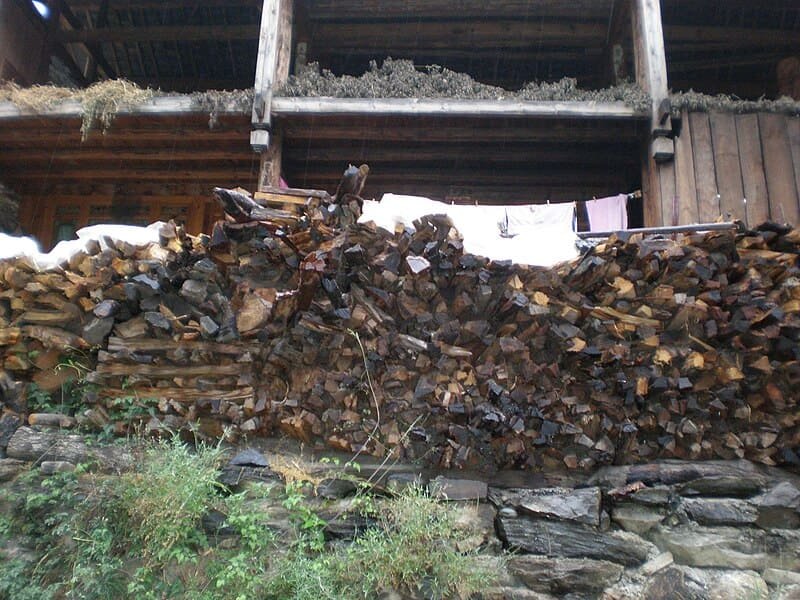When it comes to firewood, walnut doesn’t always get the spotlight it deserves. Many people associate walnut with elegant furniture or luxurious woodwork, but fewer realize it can also be a fantastic firewood option. Whether you’re seeking a steady heat source or simply pondering its overall quality for your fireplace, burning walnut has its unique pros and cons.
Let’s dive into the world of walnut firewood—an underappreciated gem—and explore everything from its heat output to its burning characteristics and beyond.
A Brief Introduction to Walnut as Firewood

Walnut wood primarily comes from black walnut trees, a species revered for its deep brown hue and durability. While its lumber is a sought-after material for furniture, the leftover pieces—often from milling—are used as firewood.
What sets walnut apart from more conventional firewoods like oak or hickory? Its balance between density, burn quality, and smoke output makes it a surprisingly versatile choice for heating and ambiance.
The Heat Output: Steady and Reliable
Walnut produces a respectable amount of heat, clocking in at around 22 million BTUs per cord. While it may not compete with heavyweights like oak (24 million BTUs) or hickory (27 million BTUs), it still delivers solid warmth. For moderate winter climates or secondary heat sources, walnut provides consistent heat that feels both comfortable and sustainable.
One of walnut’s standout features is its balance between heat and usability. It doesn’t burn too fast or too slow, making it ideal for someone who wants a manageable fire without constant tending.
The Burning Experience: Smooth and Satisfying
Burning walnut is an absolute pleasure for those who appreciate a clean and efficient fire. The wood burns evenly, leaving behind a good amount of coals that help sustain the heat for longer periods. Its grain is relatively straight, which makes splitting walnut logs easier compared to denser hardwoods.
When seasoned properly—typically after drying for 12 to 18 months—walnut produces a fire that’s easy to ignite and maintain. Its low sap and resin content reduce the likelihood of sparks or popping, making it safer for indoor fireplaces.
Smoke: Minimal but Noticeable
One of the highlights of burning walnut is its low smoke output. Unlike pine or other resinous woods, walnut emits a cleaner burn that minimizes excessive smoke. This makes it a great option for people who prefer a more pleasant indoor experience without dealing with clouds of soot or irritants.
However, walnut does have a slightly distinct aroma. While not as overpowering as mesquite or cherry, the scent is earthy and nutty—some love it, while others might find it takes some getting used to. If you’re planning to use walnut in a fire pit or an open fireplace, this subtle aroma can enhance the ambiance.
Longevity: How Long Does it Burn?
Walnut finds its sweet spot in terms of burn time. It doesn’t burn as quickly as softer woods like pine or cedar, but it’s not as long-lasting as hickory or oak. A well-seasoned walnut log provides a steady, medium-length burn, making it ideal for evening fires or shorter heat cycles. Therefore add walnut to your firewood mix, when you want consistent warmth without overloading your fireplace.
The longevity of walnut as firewood also depends on how it’s prepared. Logs that are properly split and seasoned, will naturally burn longer and cleaner.
Ease of Use: A Friendly Firewood Option
One of walnut’s underrated qualities is how user-friendly it is. Splitting walnut is relatively straightforward, even for beginners. Its moderate density means you don’t need heavy-duty equipment to prepare it, and the logs are manageable for most woodstove or fireplace sizes.
In terms of seasoning, walnut falls into a middle-ground category. It needs sufficient drying time to shed its moisture content but isn’t overly demanding like some hardwoods. With patience and proper stacking, you can expect beautifully seasoned walnut logs within a year or so.
Quality: The Understated Champion
Walnut’s reputation as a high-quality wood extends beyond its use in furniture. As firewood, it brings a blend of cleanliness, ease, and warmth that’s hard to beat. It may not be the flashiest or the most talked-about option, but it holds its own in any firewood lineup.
When to Use Walnut: Practical Scenarios
Walnut shines in specific situations:
- Evening Fires: Perfect for those cozy nights where you want steady heat for a few hours.
- Mixed Wood Strategy: Pair walnut with longer-burning woods like oak or hickory to balance quick ignition with extended burn time.
- Ambiance: Walnut’s gentle aroma and soft glow make it a great choice for social settings or relaxation.
- Indoor Use: Its low smoke output and minimal creosote production make it ideal for stoves and fireplaces.
Tips for Burning Walnut Effectively
To make the most of walnut as firewood, keep these tips in mind:
1. Seasoning is Key: Allow walnut to dry for at least 12 months to reduce moisture and ensure an efficient burn.
2. Store Properly: Keep it off the ground and covered to prevent mold and moisture buildup.
3. Mix and Match: Combine walnut with denser hardwoods for longer-lasting heat and a well-rounded fire.
Should You Burn Walnut?
So, is walnut worth burning? Absolutely—if you’re looking for a reliable, easy-to-use firewood with a touch of class. It might not replace hardwood heavyweights like oak or hickory for primary heating, but it holds its own as a versatile and enjoyable option.
Besides that, there’s something special about walnut wood. It carries a sense of nostalgia, practicality, and elegance that resonates with those who use it. Yes, lighting a walnut fire isn’t just about warmth. It’s about enjoying a quality experience—one that brings warmth, simplicity, and a touch of nature’s elegance into your home.
Whether it’s the satisfying crackle, the clean burn, or the subtle aroma, walnut has a way of making you feel connected to nature and comforted by its steady presence. So the next time you come across walnut firewood, don’t overlook it. Stack it, season it, and light it up—you won’t be disappointed.



